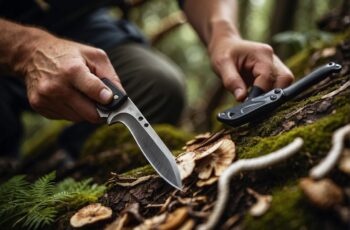Mushroom season is that eagerly anticipated time of year when the forests and fields become ripe with fungal treasures, waiting for you to discover them. As an outdoors enthusiast, you know there’s something deeply satisfying about foraging for your food, and mushrooms present a wonderful opportunity to connect with nature. The timing of mushroom season varies widely across different regions, but generally, it aligns with the wetter and cooler parts of the year when these fascinating organisms thrive.
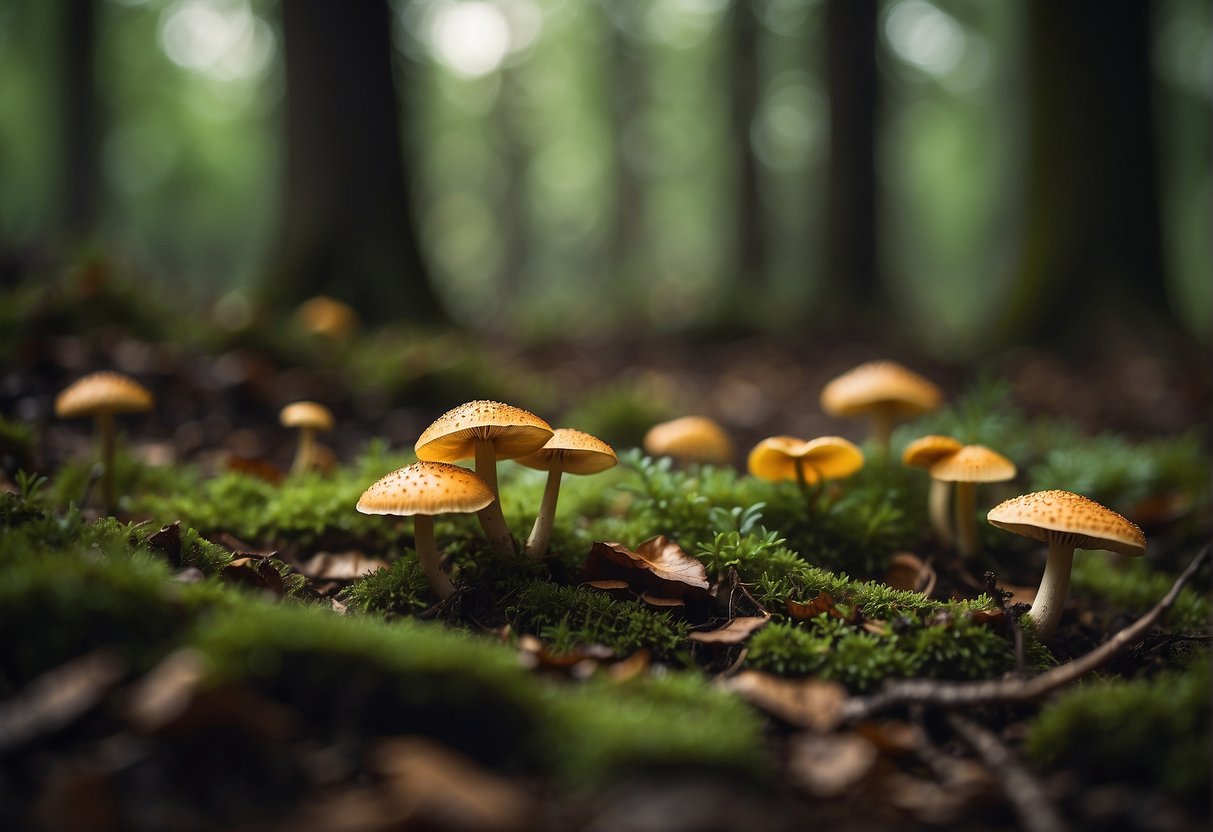
Understanding when to forage for edible mushrooms is crucial not just for your culinary success, but also for your safety. Each type of mushroom has its prime time when it is most likely to be found. For instance, morels emerge in spring, oysters in late summer to fall, and chanterelles in the dampness of late summer and through the fall. Being informed about these cycles can greatly enhance your foraging excursions.
Recognizing the environmental cues is just as important as knowing the calendar dates. Most edible mushrooms prefer moist conditions, so they commonly appear after a rainfall when the soil and air are still warm. This creates the perfect breeding ground for a variety of species, making it an opportune time for you to venture out with basket in hand. Remember, correct identification is key to a safe and enjoyable mushroom foraging experience, so equip yourself with knowledge or consult an expert when in doubt.
Optimal Seasons for Mushroom Foraging
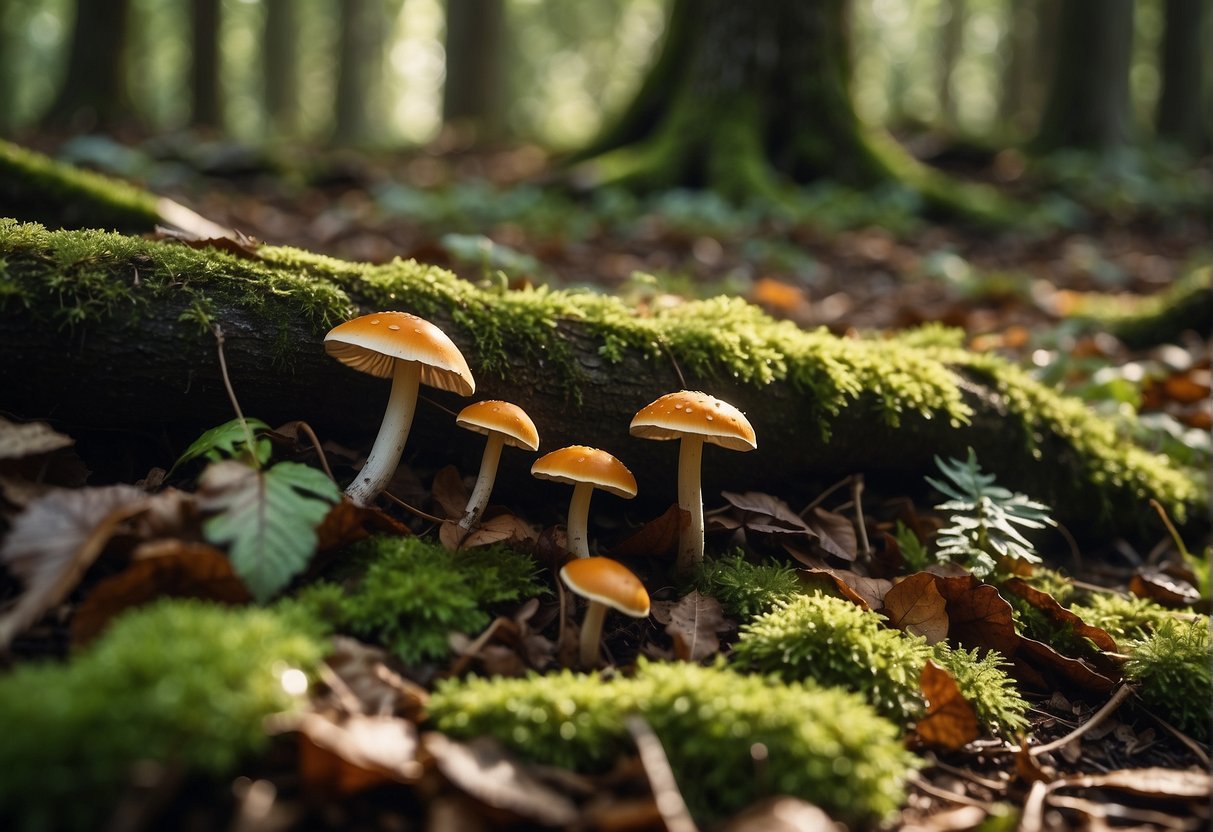
The best time for you to go mushroom foraging largely depends on the region and the specific types of fungi you’re seeking. Different mushrooms thrive in various conditions and times of the year.
Regional Mushroom Seasons
In the Pacific Northwest, including states like Oregon and Washington, you’ll find the mushroom season peaks in the fall due to the rainy climate that mushrooms favor. Alaska shares a similar autumn bounty, though the season starts a bit earlier due to the cooler climate. Moving down to California, the coastal areas offer a longer season, with mushrooms popping up from early fall through the winter months.
If you’re in the Midwest, states like Indiana and Iowa have their prime mushroom hunting in the spring and fall, with different varieties showing up in each season. Over on the East Coast in states like Maryland, New York, and Virginia, spring and fall are also optimal, with a variety of edible species flourishing in the diverse forests.
In the southern states such as Oklahoma and Texas, you might be surprised by a decent fall season, but spring can sometimes offer a unique selection due to the warmer, moister weather.
Popular Varieties and Their Seasons
-
Morels: Highly sought after, these mushrooms are mostly found in the spring across many regions, including Indiana, Iowa, and Virginia. They tend to favor the weeks following a good rain and warm weather.
-
Chanterelles: These golden delights are typically foraged in the summer and fall, particularly abundant in the damp woods of the Pacific Northwest and the East Coast states.
-
Oyster Mushrooms: They grow year-round but are best from late fall to early winter. You’ll spot these often in California and the Pacific Northwest, on the sides of trees and fallen logs.
-
Porcini Mushrooms: Known for their hearty taste, porcinis are a fall favorite. They can be found in the coniferous forests of the Pacific Northwest and the northern states during the cooler months.
Remember, accurate identification is key to a safe and successful forage, so be sure to familiarize yourself with local species and consult guides from trusted sources like “Fall Mushrooms: An Expert Guide” before you head out.
Mushroom Identification and Safety
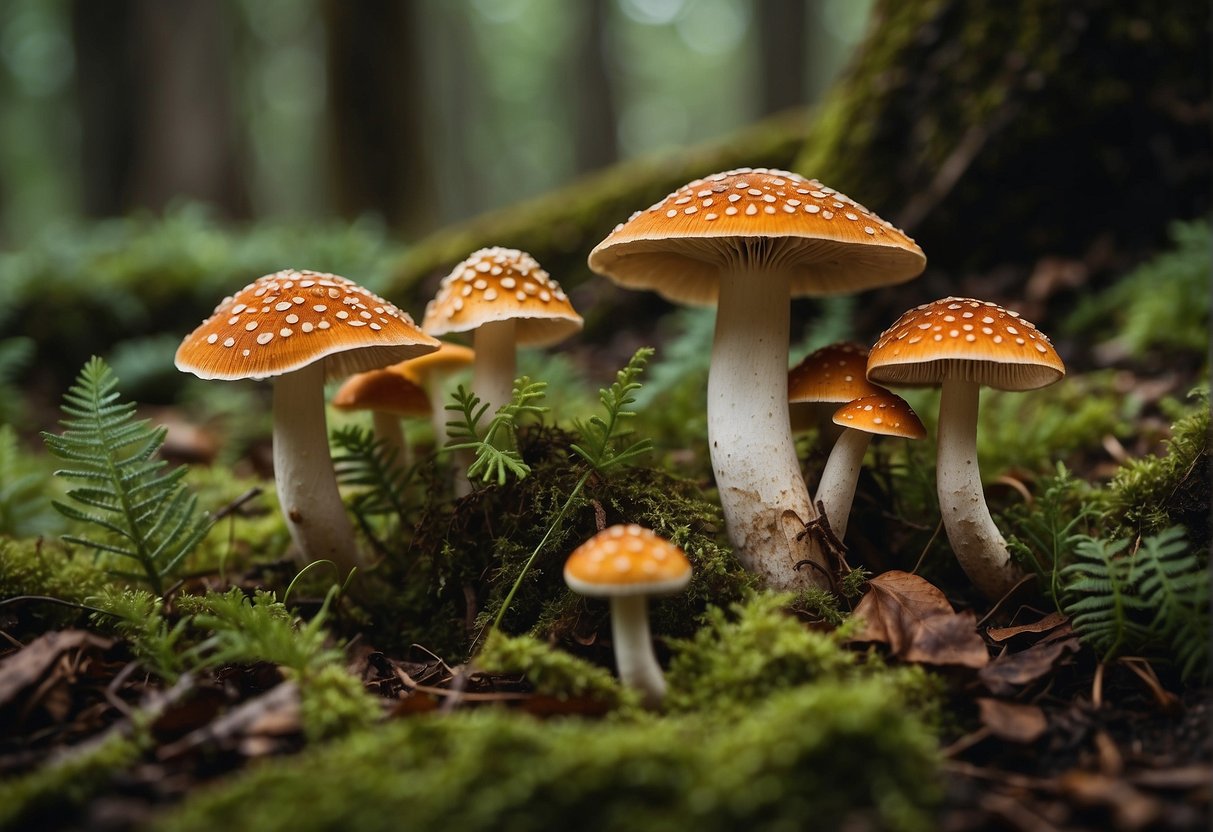
Accurately identifying mushrooms is vital for your safety during foraging. Mistaking toxic mushrooms for edible ones can have severe consequences. Before you head to the woods, arm yourself with the knowledge and tools necessary for proper mushroom identification.
Essential Tips for Identification
When you’re out in the wild searching for wild mushrooms, having a field guide is indispensable. This guide should have clear images and descriptions of various mushroom varieties, including popular edible ones like morel mushrooms and chanterelle mushrooms. Use the guide to:
- Examine the cap, stem, gills, and spore color
- Note the habitat where the mushroom grows
- Observe any unique characteristics like odor or changes on bruising
Consider consulting with a local mycologist or joining a foraging group to enhance your knowledge. Learning from experts can significantly improve your mushroom identification skills.
Avoiding Toxic Varieties
Understanding the risks associated with eating wrongly identified mushrooms is paramount. Many edible mushrooms have toxic look-alikes. To keep safe:
- Never eat a mushroom unless you are 100% certain of its identity. When in doubt, throw it out.
- Familiarize yourself with common toxic varieties in your region.
- Learn the visual differences between safe and toxic mushrooms.
Your safety is paramount. Proper identification and a cautious approach are your best tools when foraging for mushrooms in the wild.
Culinary Uses and Nutritional Benefits
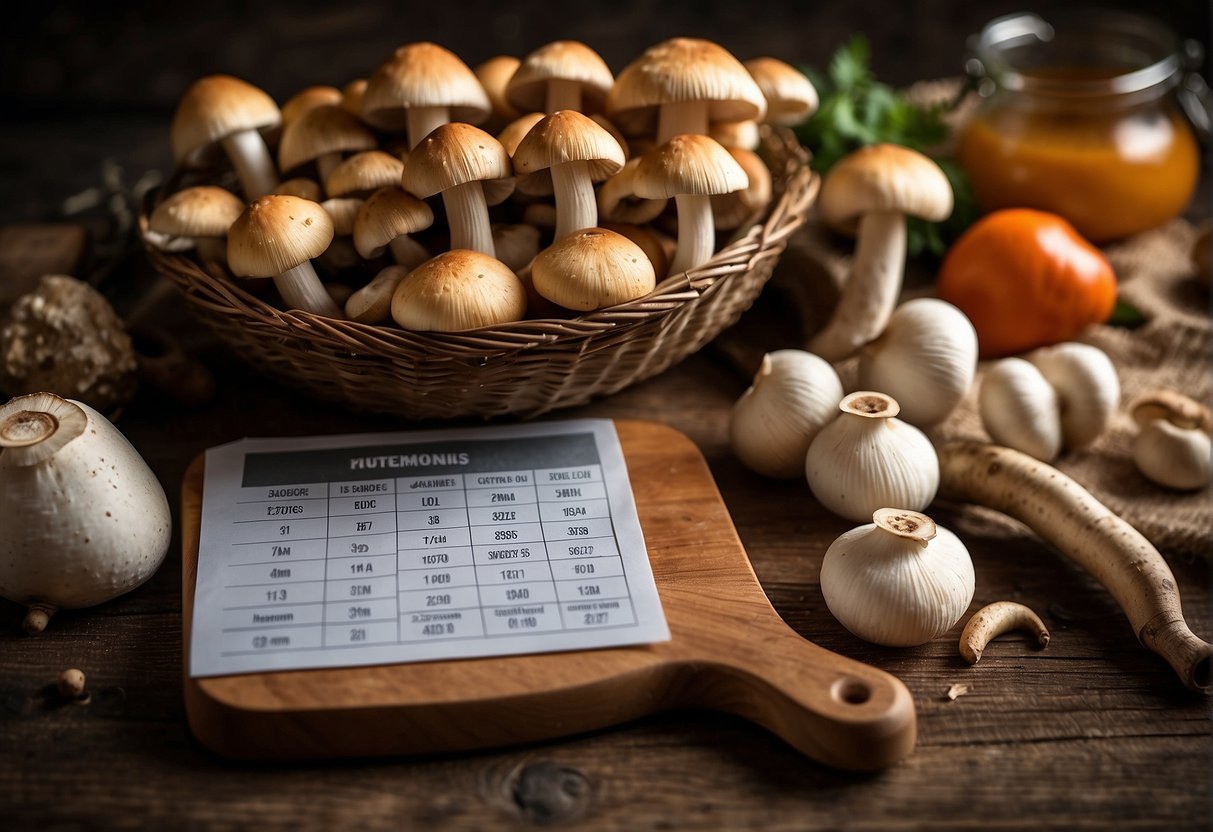
As you prepare to explore the rich flavors and nutritional opportunities of wild mushrooms, understand that they offer both culinary diversity and health benefits. Each variety of edible mushrooms brings unique textures, tastes, and nutrients to your table, enhancing your dishes with more than just flavor.
Cooking with Wild Mushrooms
When cooking with wild mushrooms like the coveted chanterelle, you’re engaging with a gourmet ingredient celebrated for its peppery and fruity notes. These mushrooms are versatile and can be sautéed in butter to reveal their rich flavor, ideal for pairing with proteins or incorporating into a variety of dishes. Here’s how you might cook with them:
- Sautéing: Cook chanterelles in butter over medium heat until golden.
- Grilling: Brush with olive oil and grill for a smoky flavor.
- Roasting: Toss lightly with oil and spices, then roast to concentrate their flavor.
Remember that wild mushrooms need careful cleaning and proper identification before consumption to ensure they are indeed edible and not harmful.
Health Benefits of Mushrooms
Mushrooms are a powerhouse of nutrition. They offer a substantial amount of protein and fiber, crucial for maintaining muscle health and aiding digestion. Furthermore, they are one of the few non-animal sources of vitamin D, essential for bone health and immune function. Mushrooms also provide potassium, which can help regulate blood pressure, and vitamin B, involved in energy metabolism. The nutritional benefits of mushrooms include:
- Vitamins: A good source of various B-vitamins and vitamin D.
- Minerals: Contain minerals like selenium, which has antioxidant properties.
Incorporating mushrooms into your diet is not only beneficial for your taste buds but also for your overall health, thanks to their valuable nutritional benefits. As you enjoy foraging or selecting mushrooms to cook, you’re also investing in a healthful addition to your meals, perfect for the great outdoors.

